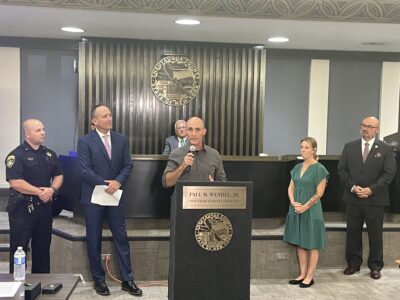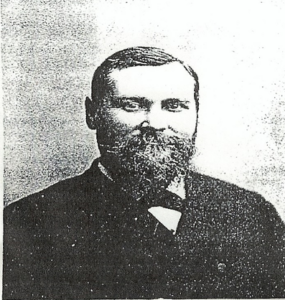Debris Cleanup Begins On Lake

Pictured above is debris collected by the Chautauqua Lake Association. Submitted photo
As we begin to enjoy more sunny days and warmer weather in early May, all of the different work being done to prepare Chautauqua Lake for the recreation season starts to accelerate.
The lake is a busy and vibrant ecosystem all throughout the year, but now is when a lot of human activity starts to come back into the fold. While water temperatures may still be a little on the chilly side, even for the most intrepid water skiers, there is still plenty of action kicking off for marinas, dock installers, anglers, homeowners, as well as organizations working in the lake and watershed. With all of this movement and preparation going on, a focus on debris cleanup from the winter and spring is a top priority in order to provide safer conditions for those using the lake.
Anyone who has spent time on the water early on in the spring after the ice leaves can tell you that it is common to see creek mouths or shorelines scattered with wood and other leftovers from snow season. The same people will also be able to tell you that hitting debris while out on your boat can be a serious concern. As a result, the Chautauqua Lake Association typically begins its maintenance season by clearing debris from the lake and outlet in order to make sure that early-season boaters are staying as safe as possible. In 2021, the CLA began its pre-season debris cleanup on May 10 and wrapped up with its Chadakoin River trash cleanup on May 21. During those two weeks, 11 large truckloads of refuse were removed from the lake, which includes everything from large logs and tree limbs to everyday trash. As you can see in the photo above, plenty of these pieces of debris are large enough to cause damage to boats large and small.
This year’s spring cleanup is scheduled to begin today on May 9, and run for about two weeks “to clear hazardous woody debris that has floated into the lake from the tributaries,” CLA said in a recent release. On Saturday, May 21, the CLA in conjunction with the Conewango Creek Watershed Association and the Chautauqua-Conewango Consortium will lead this year’s volunteer-based outlet cleanup. Anyone wishing to register for that program can visit the CLA’s website or call 763-8602. These cleanup programs will lead into the start of the plant management season, which for CLA will begin with its pre-season Curly-leaf pondweed harvesting program scheduled to start around May 23. As in 2021, the Curly-leaf pondweed management program is expected to involve multiple Alliance members and utilize both mechanical and chemical approaches. Participating municipalities and the Chautauqua Lake Partnership will soon finalize the herbicide work plan pending the results of the New York State Department of Environmental Conservation permitting process. In our next edition of the Chautauqua Current, we will take a look at Curly-leaf pondweed in detail, the role that it plays in the lake, and how organizations pursue management objectives using different techniques.
Of course, spring is not the only time that debris is a concern. On the weekend of July 17 last year the area was struck by a period of harsh weather that damaged trees, caused flooding, and resulted in a large quantity of debris flowing into the lake. In response, the CLA worked with the Town of Chautauqua’s Mobitrac program and the Village of Bemus Point’s Department of Public Works on a fast-response cleanup effort. From July 19 to July 30, a total of 42 truckloads of floating debris were removed from the lake. This sort of responsive management capability is possible when stakeholders unify their efforts and employ a diversity of equipment, which helps to maximize impacts on the lake. A foundation of joint operations and cooperation was already in place before the storms came, and different personnel and equipment had already spent significant time working together before managers needed to respond to an unexpected situation. Trying to organize this type of a response on-the-fly, without that existing framework, would have been more challenging.
While rainfall from spring storms can certainly cause issues for boaters, it also helps to bring the lake closer to its summer recreational level of 1,308.2 feet. The lake level, which can be influenced to a degree by Warner Dam along the Chadakoin River in Jamestown, is lowered each fall. The goals are to reduce flooding and shoreline damage from ice buildup in the winter and to provide adequate storage to take in snowmelt and other high-runoff events common to the winter and spring. Those levels are then increased to the higher recreational level that aids boaters, homeowners and anglers during warmer months.
As the lake begins to rise, early-season programs like debris cleanup and Curly-leaf pondweed management kick off with the common goal of improving safety and usability. The management techniques mentioned in this article are just a few of the many tools in the toolbox that are planned to be deployed this year to maintain and improve this vitally important resource. Building upon the lessons of years past and using the many talents of our members, we look forward to getting this spring started out on the right foot. As residents and visitors return to the lake, the Alliance would like to thank everyone involved for their hard work, funding generosity, and dedication.




